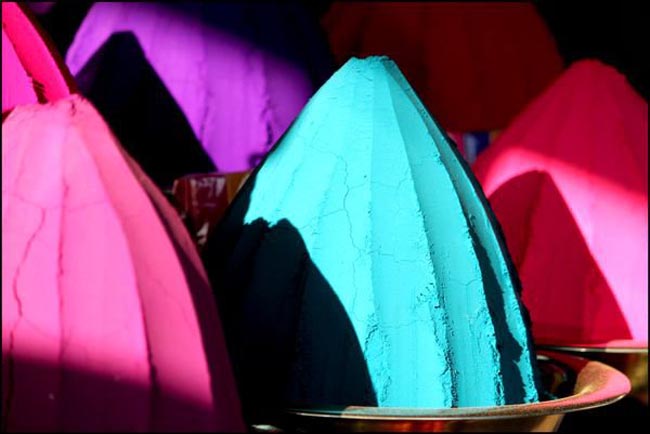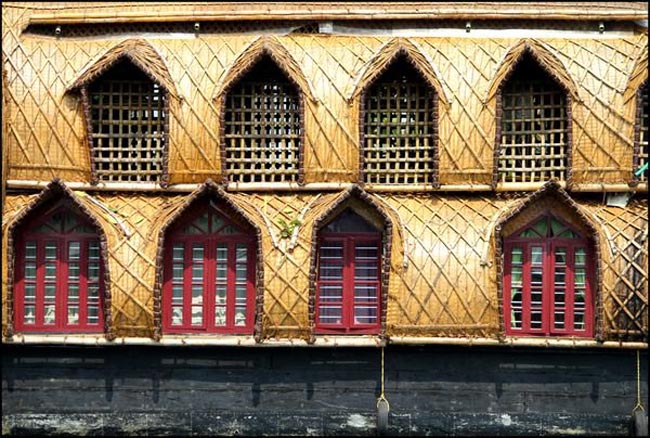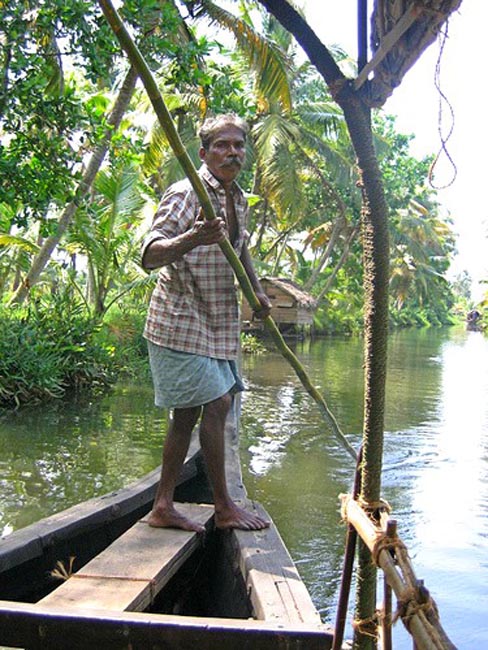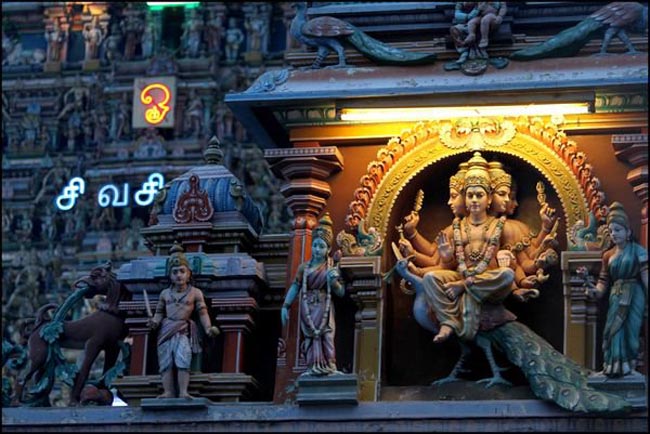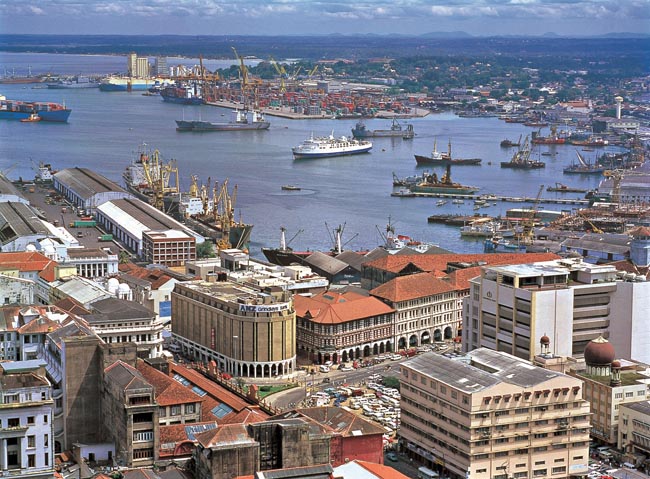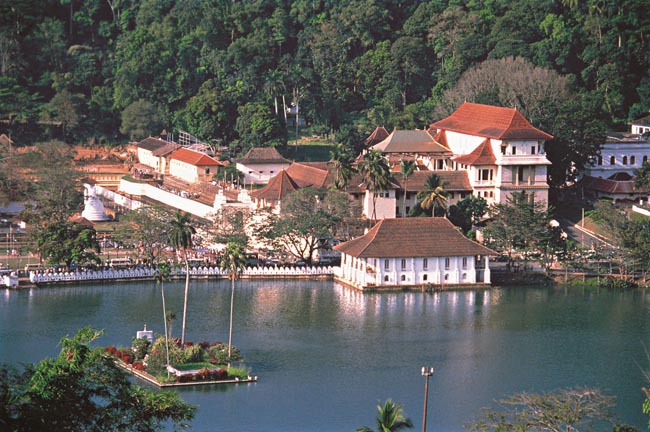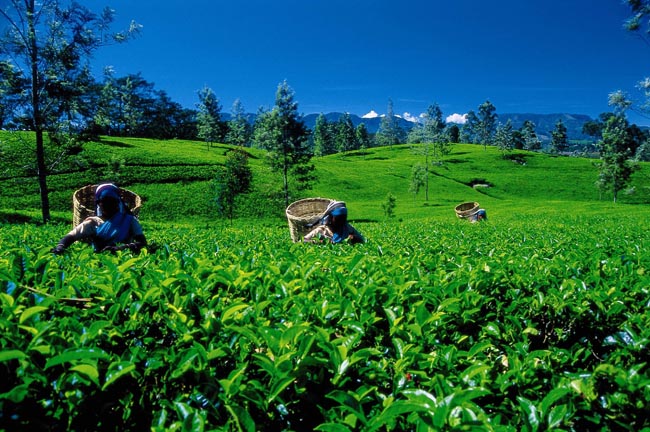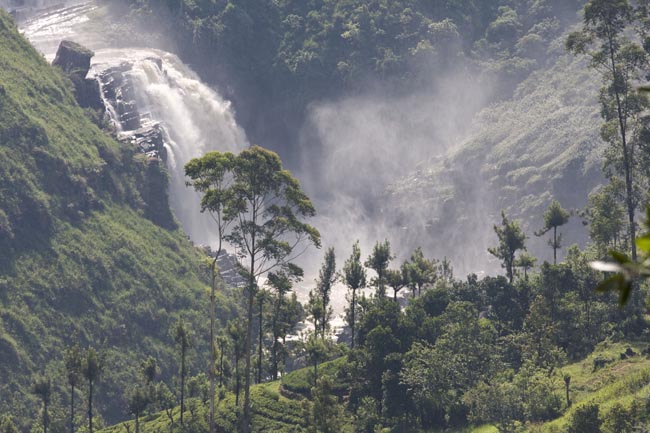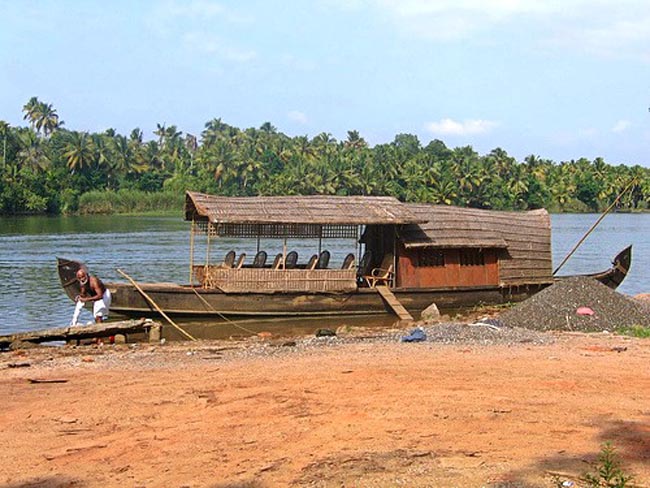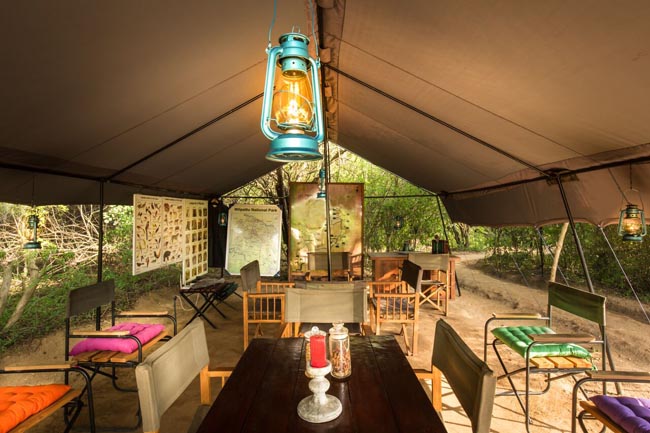Prices below are per person, twin-sharing costs in US Dollars (USD). Pricing does not include airfare to/from the tour and any applicable taxes. For single supplement rates and taxes (if any), please refer to below Prices & Dates table. For general information on flights to/from the tour, click here.
Your Travel and Accommodation Arranged For You
Tips Included for Driver, Restaurant Staff, Local Guides
Authentic Local Experiences With Lots Of Inclusions.
Select a date below to reserve your spot:
The above prices are subject to an additional $220 for taxes/fees levied on flights that occur as part of the tour. The internal airfares ARE included (any exceptions are listed in red below), but we list the taxes separately on your invoice as they are beyond our control and can change at any time.
Optional Single Supplement: $1580 USD (number of singles limited).
This tour may require a mandatory single supplement charge of $790 if you join our share program and we are unable to pair you.
Download Itinerary
Day 1 Arrive in Goa
Today we arrive in the former Portuguese enclave of Goa.
Goa achieved fame when Portuguese navigator Vasco da Gama sailed down the Malabar Coast in 1498 in search of "Christians and spices." Although he found neither, Goa became a Portuguese colony separated from the rest of India by the jungle covered hills of the Western Ghats. Goa's heartland and population is located in the alluvial strip inland from the beaches, a lush patchwork of paddy fields, coconut plantations, whitewashed churches and gently meandering rivers.
Overnight in Goa.
Day 2 Goa Area Touring
Goa is a tiny part of India on the west coast. This small state is one of India's most popular attractions -- a land of more than 26 wonderful beaches, natural springs known for their medicinal powers, green hills, a huge collection of historic temples and churches, lush fields of vegetables and grains, plus kind hearted and very hospitable people with a rich cultural milieu.
This morning we include a sightseeing tour of Panjim. a former fishing village made the capital of Goa by a decree from Lisbon. The Goan capital has a different feel from any other Indian city. Stacked around the side of lush terraced hillsides at the mouth of the Mandovi River, its skyline of sloping red-tiled roofs, whitewashed churches and concrete apartment blocks, the essence of the city, purely based on Portuguese architectural style, is distinctively seen all around. It is spread around Altinho, a residential area with Portuguese style bungalows. The dominant structure is the Patriarch's Palace with the statue of Christ the King on its lawns. The Idalcao (Adil Shah's palace), built in 1490, is the oldest monument in Panjim. The Church of Our Lady of Immaculate Conceptions offers the best views of the city.
Driving through the historic neighbourhood of Fontainhas, known as the Latin Quarter, past old, colourful villas. We will pause at the small St Sebastian Chapel to view several statues of historical figures including the Roman Catholic monk Abade Faria.
Our tour also takes us to Old Goa, the heartland of Asian Christianity, once a bustling metropolis but is now in ruins. Old Goa, called “Rome of the East,” bounds in churches and chapels, some dating back to the 16th century. The profusion and architectural excellence of churches include superb examples of late renaissance, early baroque, Manueline and Gothic. Visit some of the most popular and the best-known churches and cathedrals in Old Goa.
At some point in our day, we’ll enjoy lunch at Sahakari Spice Farm, an award -inning spice plantation set amidst lush green surroundings. A guide takes us around the farm, explaining the usefulness of the spices, tropical fruits, herbs and roots grown here, such as cashew, Areca nut (betel nut), and tropical fruit like star fruit, jackfruit, custard apple, banana, papaya and pineapple. After the tour, we are served an exquisite Goan lunch in traditional style.
Balance of the day at leisure to enjoy this laid-back town.
Overnight in Goa.
Included Meal(s): Breakfast, Lunch and Dinner
Not finding what you're looking for?
Our specialists can take away the stress and create a private custom tour tailored to your exact interests and budget.
Day 3 Goa: Heritage Tour
This morning we visit several sleepy villages, stepping back in time to get a glimpse of the historic remnants of the Portuguese era.
Our first stop is the little village of Loutolim. Built in 1590, it pre-dates the Taj Mahal by decades. It was designed by Jesuit priests from nearby Rachol Seminary to accommodate a newly-converted Goan family -- the Podiars, who took the name Figueiredo. The house's sumptuous interior stands in studied contrast to the natural beauty of the paddy fields and coconut trees that surround it. In the 18th century, with the family's rise in power, the house was suitably augmented to achieve its current proportions.
We continue to the village of Chador to visit another heritage mansion, the Menzes Braganza Mansion, the biggest Portuguese mansion of its kind in Goa. Built in the 17th century and stretching along one whole side of Chandor's village square, it is the best example of what Goa’s once-grand and glorious mansions have today become.
Finally, the Palácio do Deão, a 250 year old mansion built by a Portuguese nobleman, features some outstanding lush gardens, which have been known as the most beautiful pleasure gardens in Goa.
We enjoy a traditional lunch at Palácio do Deão, where you can savour Goan delicacies. Goan cuisine originated from its ancient Hindu roots, but was influenced by the 451 years of Portuguese colonialisation and the century of Muslim rule. As Goa is located in a tropical zone, the spices and flavours are intense.
The remainder of the day is yours to explore further, do some shopping, and/or enjoy one of the area's many beaches. Owing to the open-ended nature of our day and included lunch, we leave dinner to your own account today.
Overnight in Goa.
Included Meal(s): Breakfast and Lunch
Day 4 Goa - Badami
Today, we embark on a scenic road trip to the historic town of Badami. After a full day of travel, we arrive in Badami and immediately set out to explore its magnificent rock-cut temples.
These ancient temples, carved out of solid sandstone cliffs, are adorned with intricate sculptures depicting Hindu deities such as Shiva, Vishnu, and Durga. The Durga Temple, in particular, is renowned for its fusion of southern and northern architectural styles.
Depending on our arrival time, we may continue our exploration of Badami's historical sites the following morning.
Overnight in Badami.
Included Meal(s): Breakfast and Dinner
Day 5 Badami - Aihole - Patadakkal - Hospet
We travel by road to Hospet.
We make a stop at Aihole. The seventy temples at Aihole exemplify Hindu medieval art. The Durga temple with its pyramidal roof has some remarkable sculpture, and the Jain Meguti temple is composed of 630 small stone blocks.
We also visit Patadakkal, the place where the Chalukuan kings had their coronation ceremonies. The ceiling of the Papanath temple, built around 680 AD, has a carved smiling Shiva, appearing to bless with his outstretched palm from whatever direction he is viewed. The Virupaksha Temple is a curious figure -- an elephant on one side and a buffalo on the other.
Continue to Hospet.
Overnight in Hospet.
Included Meal(s): Breakfast and Dinner
Day 6 Hospet - Hampi - Hospet
After breakfast we depart for a day trip to Hampi, the seat of the famed Vijayanagara Empire, which was the capital of the largest empire in post-Mughal India, covering several states. Although in ruins today, this capital city once boasted riches known far beyond the shores of India. The ruins of Hampi of the 14th Century lies scattered in about 26 sq. km area, amidst giant boulders and vegetation. Protected by the tempestuous river Tungabhadra in the north and rocky granite ridges on the other three sides, the ruins silently narrate the story of grandeur splendour and fabulous wealth. The splendid remains of palaces and gateways of the broken city tell a tale of man's infinite talent and power of creativity together with his capacity for senseless destruction.
Return to Hospet.
Overnight in Hospet.
Included Meal(s): Breakfast and Dinner
Day 7 Hospet - Hassan
After an early breakfast, depart on the long (+/- 7 hours) but interesting drive through rural Karnataka to Hassan. Upon arrival check-in at the hotel.
Overnight in Hassan.
Included Meal(s): Breakfast and Dinner
Day 8 Hassan: Belur & Halebid
Today we visit Belur and Halebid.
Belur and Halebid were both capitals of The Medieval Hoysala kings who built the exquisitely carved temples in the 12th & 13th centuries. Belur is famous for it Hoysala architecture; its Temple of Lord Channakeshava is embellished with carving which has few equals in the world. It took 103 years to complete and you can see why. The facade of the temple is filled with intricate sculptures and friezes with no portion left blank: elephants, episodes from the epics, and sensuous dancers.
Halebid was the seat of Hoysala Kingdom; its great Hoyaleswara Temple was built in the typical Hoysala style. The temple, dating back to the 12th century, is astounding for its wealth of sculptural details. The walls of the temple are covered with an endless variety of gods and goddesses, animals, birds and dancing girls. Yet no two facets of the temple are the same. This magnificent temple -- guarded by a Nandi Bull -- was never completed, despite 86 years of labour.
We return to Hassan.
Overnight in Hassan.
Included Meal(s): Breakfast and Dinner
Day 9 Hassan - Mysore
This morning we travel to Mysore, arriving around midday.
In the afternoon we explore Mysore, famous for its silk and sandalwood, as well as its numerous palaces, well laid out boulevards and beautiful parks. The Maharaja's Palace is the most impressive of Mysore's ochre-coloured buildings -- a modern edifice built in 1897, where the oriental decorative imagination runs wild. One of the largest palaces in India, it is a gigantic synthesis of Hindu and Muslim styles. The royal family's private chambers, including the impressive Durbar Hall, are open to the public. The Marriage Hall has life-like paintings of the Dassera procession and in the museum is the ruler's golden elephant throne, used during festivities. Chamundi Hill lies 10 km from Mysore and is named after Chanduswari, the consort of Lord Shiva and the patron goddess of the royal family of Mysore. On the way up is a colossal figure of Nandi, carved out of a single rock in 1659. The view from the top of the hill is superb.
Overnight in Mysore.
Included Meal(s): Breakfast and Dinner
Day 10 Mysore - Bangalore: City Tour
Today we travel by road to Bangalore, the cosmopolitan capital of Karnataka.
Bangalore is called the Garden City for it's delicate blossoms and greenery that impart a unique beauty to this lovely city. The weather is the city's best feature, with pleasant summers and bearable winters. Bangalore, which literally means the 'town of baked beans', was founded by Kempe Gowda, a chieftain of the Vijayanagar Empire, around the 16th century. He built four towers in four directions to specify its boundaries.
On arrival we tour Bangalore, visiting the Lal Bagh Botanical Gardens, which has a variety of old trees, fountains, lotus pools, terraces and an assortment of tropical herbs and subtropical herbs. We also see the government buildings.
Overnight in Bangalore.
Included Meal(s): Breakfast and Dinner
Day 11 Bangalore - Fly to Kochi - Allaphuza: Houseboat
Early this morning we fly to Kochi (Cochin).
We continue by road to Alappuzha (Alleppey), known as the "Venice of the East", situated on Vembanad Lake, the longest in India. A maze of canals and a network of bridges give this busy commercial town its descriptive sobriquet. Alleppey is known for its coir, the retted fibre of the coconut husk and for black pepper.
Today we board our houseboat for a very special Kerala delight -- a slow boat through its forests and palm-shaded canals. We take a leisurely cruise on the beautiful backwaters, enjoying the magnificent scenery along the waterways and stopping to admire what history and religion have left along the way.
THE HOUSEBOAT will be approx 60 feet long and 13 feet wide in the middle. There are comfortable beds, and traditional lanterns, and air-conditioning. There will be a sundeck for daytime relaxation. The boats are made of local natural fibres that truly echo the villagers harmony with the natural surroundings. As your oarsman slowly and silently propels us along the backwaters, we will enjoy the magnificent scenery along the waterways. We will stop to view working villages and witness locals fishing, swimming, crafting, and bathing (most boats will have oarsman though some will be motorized with a silencer on the motor).
NOTE: Single cabins are NOT available on the houseboat. Single supplements reflect sharing for this one night.
Overnight Kerala Houseboat.
Included Meal(s): Breakfast, Lunch and Dinner
Day 12 Return to Kochi: City Tour
Today we return to Kochi.
The history of European involvement in Kochi, from the early sixteenth century onwards, is dominated by the aggression of, successively, the Portuguese, Dutch and British, competing in their desire to control the port and its lucrative spice trade. From 1800, the state of Cochin was part of the British Madras Presidency; from 1812 until Independence in 1947, its administration was made the responsibility of a series of diwans, or financial ministers. In the 1920s, the British expanded the port to make it suitable for modern ocean-going ships; extensive dredging created Willingdon Island, between Ernakulam and Fort Cochin.
On arrival we have a tour of Kochi, including: Chinese fishing Nets -- A legacy of one of the earliest visitors to the Malabar coast, these nets are unmistakable as one enters the harbour. Records show that they were first erected between AD 1350 and 1450. Constructed out of Teak wood and Bamboo poles, they work on the principle of balance. The best place to watch is from Vasco Da Gama square, a narrow promenade that parallels the beach with little stalls that serve fresh seafood, tender coconuts and so on.
Santa Cruz Basilica: Built by the Portuguese, the church was elevated to a Cathedral by the Pope Paul IV in 1558. Spared by the Dutch conqueror of Cochin who destroyed many Catholic buildings in 1663, it later fell into the hands of the British who demolished it when they took over Cochin in 1795. For almost 100 years there was no church on the site, until the Bishop Dom Gomez Vereira commissioned a new building in 1887.
Overnight in Kochi.
Included Meal(s): Breakfast and Dinner
Day 13 Kochi - Fly to Chennai: City Touring
Today we fly to Chennai (Madras).
Chennai, the capital of Tamil Nadu, is, like Mumbai and Calcutta, a comparatively modern creation. It was founded by the British East India Company in 1639, on a narrow five-kilometre strip of land between the Cooum and Adyar rivers, a few kilometres north of the ancient Tamil port of Mylapore and the Portuguese settlement of San Thome, established in 1522. The British were repeatedly challenged by the French who, in 1746, destroyed much of the city.
Robert Clive ("Clive of India"), then a clerk, was taken prisoner, an experience said to have inspired him to become a campaigner. Clive was among the first to re-enter Chennai when it was retaken three years alter, and continued to use it as his base. Following this, fortifications were strengthened and the British survived a year-long French siege (1759), completing the work in 1783. By this time, however, Calcutta was in the ascendancy and Madras lost its national importance.
We will visit Fort St George, once a stronghold of the British; St Mary's Church, the oldest Anglican church in India; the San Thome Cathedral where the remains of St Thomas the Apostle are believed to have been buried; the Mylapore Temple dedicated to Lord Shiva and the Light House which is the only one of its kind in the world to be located on top of a High Court. We drive along the Marina, the thirteen kilometre-long beach which, with its shining white sands, aqua blue sea and violet lights at night, is the pride of Chennai.
Overnight in Chennai.
Included Meal(s): Breakfast and Dinner
Day 14 Chennai & Mahabalipuram
Today, we embark on a scenic drive of approximately 60 kilometers to Mahabalipuram, a coastal town steeped in history. This ancient seaport, once a thriving center of the Pallava dynasty, is renowned for its stunning rock-cut temples and intricate sculptures dating back to the 7th century.
The temples of Mahabalipuram are unique for their simplicity and their depiction of everyday life, offering a fascinating glimpse into the culture and society of the Pallava era. We'll explore these architectural marvels, marveling at the skill and artistry of the ancient craftsmen.
After a leisurely lunch by the serene Bay of Bengal, we'll return to Chennai, carrying with us the enduring beauty and historical significance of Mahabalipuram.
Overnight in Chennai.
Included Meal(s): Breakfast and Dinner
Day 15 Chennai, India - Colombo, Sri Lanka - Negombo
Today's city sightseeing of Chennai includes a visit to the National Art Gallery and Museum, which has a selection of ancient paintings from almost all schools of art, as well as a section entirely devoted to modern art. We will visit Fort St George, once a stronghold of the British; St Mary's Church, the oldest Anglican church in India; the San Thome Cathedral where the remains of St Thomas the Apostle are believed to have been buried; the Mylapore Temple dedicated to Lord Shiva and the Light House which is the only one of its kind in the world to be located on top of a High Court. We drive along the Marina, the thirteen kilometre-long beach which, with its shining white sands, aqua blue sea and violet lights at night, is the pride of Chennai.
After dinner we board our evening flight to Colombo, Sri Lanka and transfer to Negombo, situated nearby the International Airport and approximately 35km (22 mi) north of Colombo. Negombo town is a historically interesting place that has been strongly influenced by the Catholic Church. The Dutch captured the town from the Portuguese in 1640, lost it again in the same year, and then captured it again in 1644. The British then took it from them in 1796 without a struggle. Negombo was one of the most important sources of cinnamon during the Dutch era.
Overnight in Negombo.
Included Meal(s): Breakfast and Dinner
Day 16 Negombo - Wilpattu / Evening Safari & Night Walk
This morning we depart after breakfast and head to Wilpattu National Park, the oldest and largest National Wildlife Park in Sri Lanka. This destination is a must for those wishing to explore unchartered wildlife parks in Sri Lanka. Visitor numbers here remain low, even in high season, which gives Wilpattu a genuine sense of wilderness.
Lying on the northwest coast, Wilpattu was declared as a sanctuary in 1905 and upgraded to national park status in 1938. Aside from Wilpattu's rugged beauty, there is thought to be a high chance of sighting leopard here, and in addition elephant, sloth bear, water buffalo, and spotted deer can also be found. The park is also a major sight of interest for birders!
Upon arrival we will check into our tented safari camp (all tents have en-suite facilities), our home for the next two nights. After a break for lunch at the camp we will enjoy an afternoon/evening safari with our naturalist-guide.
As our campsite is located just bordering a lake close to the park’s boundary, we are able to experience something very similar to living inside the park. If we are fortunate we may even encounter wildlife in the campsite itself. Our complete tented camp experience includes expert game drivers and professional naturalists.
After dinner we will also enjoy a guided night walk!
Overnight near Wilpattu National Park.
Included Meal(s): Breakfast, Lunch and Dinner
Day 17 Wilpattu National Park: Full Day Exploration
Today we make an early start so that we can enjoy a full day safari in the park. Coffee, tea and cookies will be available at the camp in the morning, and a scenic location has been pre-selected for our picnic breakfast stop.
The Wilpattu National Park is a well known ecotourism destination -- a status which is upheld by the strong prevalence of leopards in the park. Though the present number of Sri Lankan Leopards in the park is unknown, this is one of the favoured wildlife safari destinations to observe these big cats. Another highlight is the highly population of Sri Lankan Sloth Bears that can also be found here. We will enjoy a lovely picnic lunch near a lake. A unique feature of this park is the existence of "willus" (natural lakes) -- natural, sand-rimmed water basins or depressions that fill with rainwater.
We later return to our tented camp in time for dinner, and for those who would like, another night walk is available this evening.
Overnight in Wilpattu National Park.
Included Meal(s): Breakfast, Lunch and Dinner
Day 18 Wilpattu - Sigiriya: Afternoon Fortress Visit
This morning we depart for Sigiriya. The ancient city of Sigiriya is a premier historical destination in Sri Lanka, and was designated as a UNESCO World Heritage Site in 1982. For many travellers this site is considered to be one of the world’s true wonders! Translated as 'Lion Rock' in English, the name of the monument indicates the way in which visitors used to begin their final ascent to the top -- through the open jaws and throat “giriya" of a lion “sinha”. Unfortunately, the only remains of this lion figure are the gigantic paws, sculpted into the side of the rock. The topography of the area is flat except for the massive rock outcrop of the fortress itself, which rises an incredible 600 feet up from the green scrub jungle.
After checking into our lodge we will head out for our visit to the rock fortress of Sigiriya. Rising dramatically from the central plains, the enigmatic rocky outcrop of Sigiriya is perhaps Sri Lanka's single most dramatic sight. The Sigiriya Rock Fortress is surrounded by an extensive network of gardens, lily-covered moats, ponds, canals, alleys and fountains. Climbing to the top is not easy (and perhaps not possible for everyone), but we have plenty of time and will not be in a rush. There are about 1,200 steps! That's roughly the equivalent of climbing 60 flights of stairs in a 60 story building. But, don't panic... with proper footwear and lots of water, you can climb at your own pace and turn back at any time that you wish.
After conquering the winding spiral staircases and limestone steps, you will reach the summit of Sigiriya rock. Once at the top, relax and savor the unmatched panoramic views! Here stood the royal complex, complete with bathing pools, royal chambers, and a throne. Once you reach the top you will understand why Sigiriya is often referred called the “palace in the sky.”
We later return to our lodge in nearby Kandalama in time for dinner.
Overnight in Kandalama.
Included Meal(s): Breakfast and Dinner
Day 19 Sigiriya & Polonnaruwa
After breakfast we will enjoy a walk along a village trail with our local guide in order to learn more about the way of life in the nearby community. Today we will enjoy a typical local lunch prepared by the villagers.
Later this afternoon we will visit the UNESCO protected ancient city of Polonnaruwa. Polonnaruwa is nearly 1,000 years, and is one of Sri Lanka 's ancient capital cities. This is part of the famous 'Cultural Triangle' of Sri Lanka. Kings ruled the central plains of Sri Lanka from Polonnaruwa 800 years ago, when it was a thriving commercial and religious centre. Although King Vijayabahu was the first to claim the city as his capital, it was King Parakramabahu who made it what it is today... with its massive buildings, ornate parks and the 'piece de resistance' -- a 2500 hectare tank called 'Parakrama Samudra' (Sea of Parakrama). The city itself is divided into the ‘new’ and ‘old’ town, with the impressively preserved ruins split into five main areas. Due to its reasonably compact layout, the ruins can be easily explored on foot.
Tonight we will enjoy dinner at our lodge with our special guest -- Sunil Gunathilake from The Primates Project. Sunil is the Senior Research Assistant of the project, and he will take us through almost 50 years of history of the Monkey Kingdom (A 2015 American nature documentary) in Pollanaruwe, where the primate “actors” became an instant hit with award winning movie.
Overnight in Kandalama.
Included Meal(s): Breakfast, Lunch and Dinner
Day 20 Sigiriya - Kandy / Temple of the Tooth
Today we depart from the Sigiriya region and travel south towards Kandy. Kandy is Sri Lanka's second largest city located in the mountainous center of the island, and considered by some as the cultural capital of Sri Lanka. Kandy was declared as a world heritage site by UNESCO in 1988. The cooler climate and smaller size make it a pleasant place to visit. The easy to explore compact downtown area is surrounded by beautiful and lush hills.
In the early evening we will enjoy a city walk in Kandy, and we will visit the Sacred Temple of the Tooth. Sri Dalada Maligawa -- famously known worldwide as The Temple of the Tooth -- dates back to the 16th century, though most of the present buildings were built in the 19th century. Venerated as the most important object in the Buddhist world, the Sacred Relic of the Tooth of Buddha is enshrined at the Temple. Brought from India 2500 years ago, it is said that the possessor of the Relic had the right to rule the country. The Relic is kept in a gold casket and stored amidst great security in the Inner Chamber. The Temple complex is made up of numerous buildings most of which are highly decorated with paintings and carvings depicting Buddha. Rich in history and tradition, the Sri Dalada Maligawa is a religious centre where daily worship is a colourful and joyful way of everyday life.
At several times throughout the day different services are held, and with the large numbers of worshippers present it is clear to see why Buddhists are so piously devoted towards the Sacred Tooth Relic. Spine-tingling traditional drumming can be heard coming from the Inner Chamber, and will signal that the ceremonial opening of the window for the public viewing of the casket with the Relic within is just about to begin.
Overnight in Kandy.
Included Meal(s): Breakfast and Dinner
Day 21 Kandy / Gadaladeniya & Lankathilaka
Today after breakfast we will visit Gadaladeniya & Lankathilaka. These sites are both important, though lesser-known highlights of the Kandy region.
This Buddhist temple of Gadaladeniya dates from the 14th century, and the main shrine room contains a stunningly beautiful, gilded seated Buddha. Built on a rocky outcrop and covered with small pools, the temple is reached by a series of steps cut into the rock. Lankatilaka is an ancient Buddhist temple built upon a huge rock and dates back to the 14th Century. During our visits this morning we will be met by a spiritual leader and invited to attend a brief Buddhist ritual (approx 45 minutes) where we learn about the Buddhist way of life and mediation. Our special invitee, Vipula Wanigasekera, was in the spiritual studies for nearly three decades. Vipula is a senior lecturer at the Sri Lankan government owned National School of Business Management.
After a break for lunch we will return to the hotel in the late afternoon and you will have some free time before dinner (on your own this evening).
Overnight in Kandy.
Included Meal(s): Breakfast and Dinner
Day 22 Kandy - Nuwara Eliya & Tea Plantations
After breakfast we will head to the Kandy train station where we board our train to Nanuoya.
Our journey provides us with some breathtaking views! The very first steam trains were running in Sri Lanka to bring tea, the greatest commercial export of the colonial Ceylon, to Colombo. From Nanuoya we disembark and travel by bus to Nuwera Eliya.
Along our route we will make a stop at the Pedro Tea Estate where we will visit the factory and learn about the tea making process. Sri Lanka is one of the biggest and best tea producers, and tea is an integral part of the culture. The factory here was originally built in 1885 and is still packed with 19th-century engineering.
Nuwara Eliya is surrounded by mountains covered by dense, moss-covered cloud forests and
tea plantations. Here one experiences perpetual English spring weather, with seasonal mists and dry winds that provide ideal weather conditions for the production of one of the choicest grades of high grown tea, to which it gives its name. The city's southern end is adorned by Lake Gregory; high waterfalls add to its scenic beauty.
Overnight in Nuwara Eliya.
Included Meal(s): Breakfast and Dinner
Day 23 Nuwara Eliya - Unawatuna
Today’s journey takes us to Unawatuna in the southwest of the country. We will depart the tea country and head towards the beautiful coast of Sri Lanka. This is a long drive, usually taking most of the day, but we will make several stops along the way.
For much of our route today we will pass through the hilly ‘wet zone’, noted for its fishtail palms, red and yellow bananas, and rubber trees. In the wet zone, the dominant vegetation of the lowlands is a tropical evergreen forest, with tall trees, broad foliage, and a dense undergrowth of vines and creepers. Subtropical evergreen forests resembling those of temperate climates flourish in the higher altitudes. Montane vegetation at the highest altitudes tends to be stunted and windswept.
En-route we pass through Kitulgala. This is a small town situated in the wet zone rainforest, and is one of the wettest places in the country. The Academy Award-winning 'The Bridge on the River Kwai' was filmed on the Kelani River near Kitulgala. Large numbers of local people make the excursion from Colombo during the weekends to enjoy the beautiful scenery.
Overnight in Unawatuna.
Included Meal(s): Breakfast and Dinner
Day 24 Unawatuna - Galle City Tour
After an early breakfast we will head out to the historic city of Galle, a UNESCO World Heritage site. This city truly is a jewel, and we will tour the city and Fort with a local specialist. During our walk we will witness the life of the city and visit inside the private home of a family who have been living there for generations! The exotic old trading port of Galle is blessed with imposing Dutch-colonial buildings, ancient mosques and churches, grand mansions and museums.
Founded in the 16th century by the Portuguese, Galle reached the height of its development in the 18th century, before the arrival of the British. It is the best example of a fortified city built by Europeans in South and South-East Asia
On our way back to the hotel we will stop and see the famous stilt fishermen. This is an iconic and age old method of catching fish, and there is a beauty and uniqueness to the method. Though stilt fishermen make the activity seem easy and comfortable; stilt fishing requires much skill and balance. A vertical pole with an attached crossbar is embedded into the sea floor among the shallows, or on a riverbed. The crossbar allows the fishermen to be seated a couple of meters above the water causing minimal shadows on the water and hence little to no disturbance amongst the sea life. The stilt fishermen then use a rod from this precarious position to bring in a good catch of spotted herrings and small mackerels from the comparative shallows of the sea or from the river. They collect the catch in a bag tied to the pole or to their waist. Though it is a lovely sight, it is a hard and uncomfortable task for a small catch of just enough fish to feed a few mouths.
Overnight in Unawatuna.
Included Meal(s): Breakfast and Dinner
Day 25 Unwatuna - Colombo / Colombo City Tour
After breakfast we will depart for Colombo. Colombo is Sri Lanka’s commercial capital, and an important port in the Indian Ocean since ancient times. Traders from the Middle East used Sri Lanka as an exchange center while Arab traders came to gather the ivory, precious stones and spices such as cinnamon, cardamom, cloves and pepper, which were highly priced in Europe.
Our city tour will take us to the bustling Petta Bazaar, Independence Square and past the Parliament. During this time our local guide will introduce you to the melting pot of cultures that make up Sri Lanka, and you will learn about its history, trade and communities.
Overnight in Colombo.
Included Meal(s): Breakfast and Dinner
Day 26 Departure from Colombo
Today we say our farewells and depart from Sri Lanka.
BON VOYAGE!
Included Meal(s): Breakfast
Inclusions
Breakfast and dinner are included daily, one lunch. Evening meals on tour will be taken mostly at hotels. In some locales we endeavour to break up the buffet dinners with a meal at a local restaurant but, overall, the imperatives of hygiene and quality dictate hotel meals. All transport, accommodation, sightseeing and entrance fees are included for sites noted as 'visited' in the detailed itinerary. Gratuities for drivers, restaurant staff, porters, local guides. Airport transfers for land & air customers.
Exclusions
International airfare to/from the tour. Tour Leader gratuities, lunches, drinks, personal items (phone, laundry, etc), domestic and international (if applicable) air taxes, visa fees, and any excursions referenced as 'optional'. Airport transfers for Land Only customers. Optional trip cancellation insurance. Our post-reservation trip notes offer further guidance on shopping, not included meals, visas.
Seasonality and Weather
INDIA: For most of the country, late October-March is (by far) the best time to visit. During those months, temperatures range from 65-95 F/19-37 C in the south. March-June is dry and exceedingly hot (85-110 F/30-44 C), and June-October is monsoon time (20-80 in/50-200 cm of rain will fall in one season). While conditions can vary widely, you must be prepared for some sticky heat.
SRI LANKA: Upland areas are cooler and more temperate and coastal areas are cooled by sea breezes. There are 2 monsoons, which occur May-Jul & Dec/Jan. The best time to travel weather wise is between October and March.
Transport and Travel Conditions
Ground transport via private air-conditioned motor coach. Internal flights via scheduled carriers. The tour is not physically strenuous though it is busy; you must be prepared for some early starts, be steady on your feet, and be able to endure some heat and long days. We have numerous walking tours and visit several sites that are LARGE with steps and uneven surfaces. Porters are available at hotels but you must be able to manage with your baggage at airports.
Am I suitable for this tour? Please refer to our self-assessment form.
Activity Level: 1
No particular physical activity is involved other than town/city walks and short walks to dinners and sites of interest, some of which are large.
To learn more about the Activity levels, please visit our tour styles page.
Accommodation
Accommodation in air-conditioned 3-4 star hotels. Hotel properties are mostly modern and Western style. Some are older, character properties with simpler rooms and perhaps no elevators. Some properties have swimming pools. Single rooms are limited and possibly smaller than twins. Laundry services at most hotels for a modest cost. Porters are generally available (see 'Inclusions').
THE HOUSEBOAT will be approx 60 feet long and 13 feet wide in the middle. There are comfortable beds, and traditional lanterns, a sundeck for daytime relaxation. Some of the houseboats have the provision for air-conditioning, but most travellers do not care for the all-night gasoline engine noise required to run the units. Most people find that the peace and quiet, and comfort provided by a fan, are preferred. NOTE: Single cabins are NOT available on the houseboat. Single supplements reflect sharing for this one night.
Staff and Support
Tour Leader throughout, local drivers, local guides at various locations.
Group Size
10-18 plus Tour Leader
Tour Extensions
This tour is part of a series that can be upgraded to make for a longer trip. For more options, please refer to tour code/s:
Tour Overview Countries Visited: 1 Acivity Level: 1 Tour Style: Cultural
Regions visited: South Asia
Countries visited: India and Sri Lanka
*The red tour trail on the map does not represent the actual travel path.
The following is a list of sample hotels at some locations included on this tour. The hotels shown here are meant to provide a general sense of the standard of hotel we usually aim for; they are not necessarily confirmed for your chosen departure.









... as a Portuguese hamlet, with a Mediterranean influence, by world-renowned architect Charles Correa, Cidade de Goa, our beach resort in Goa, is a blend of luxury, warmth, and the laidback elegance of susegad. It embodies the heart of Goa, both in terms of location and vibe. One is welcomed by stunning views of the sea, manicured greens, and vibrant medleys of oranges, yellows, and blues.





































